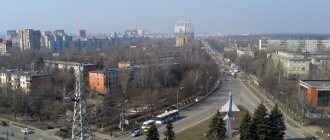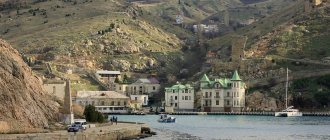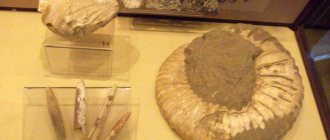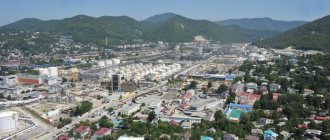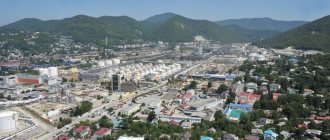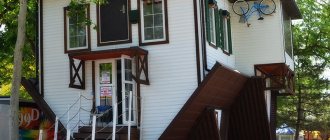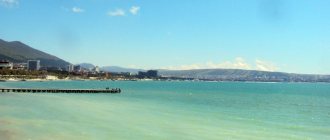Balaklava is a small picturesque city, located 15 km from Sevastopol and being its administrative part, located on the southwestern coast of Crimea. The city is located between high hills that hide the bay of the same name with the city, connected to the Black Sea. The name of the city translates as “fish bag” in Turkish or “fish weather” in Tatar. Thanks to the mountains and sea surrounding the city, the bay where Balaklava is located has a unique climate close to the subtropics. Balaklava is an amazing special place with sand or pebble beaches, good infrastructure and a favorable warm climate. Here you can enjoy the gentle sun and warm sea, and also learn a lot of interesting things by visiting the historical sights of this city. Balaklava is not only the beauty of nature and a rich history, but also a breathtaking modernity with restaurants, yacht clubs, hotels, cafes and other attributes of today. This southern resort invites tourists to have a bright, interesting, eventful holiday.
Coastal battery No. 19
On a high cape, directly opposite the Chembalo fortress, a coastal artillery battery was erected in 1912-1916. During construction, she received the number 22.
The battery was successfully integrated into the mountainous terrain and was armed with rapid-firing 152-mm Kane cannons, capable of firing at a distance of up to sixteen kilometers. Due to its isolated location, the fortification was reinforced with a ditch, a rampart with barbettes and an anti-assault grille. The command block was located a short distance from the firing positions and was located on a natural rocky hill.
In 1930, the battery changed its number to 19.
Later, it was under him that she entered the defense of Sevastopol. In November 1941, battery fire destroyed one of the enemy marine battalions, and later the assault on Balaclava was thwarted. Local residents nicknamed the battery “Mama”, and the fascist command respectfully designated it as “Centaur-1”, throwing all their efforts into its destruction. The battery fell in early July 1942, killing most of its defenders.
After the collapse of the Soviet Union, the fortification, along with the rest of the military facilities of the Black Sea Fleet in Balaklava, was transferred to Ukraine. There was no money to support the suddenly inherited military legacy and the battery was mothballed. In 2002, they wanted to create a memorial complex on its territory, where one could immerse oneself in the life of artillerymen during the Second World War. Then the Ukrainian military flatly refused to transfer the battery to civilian use, justifying their refusal by the fact that it was a strategic facility important for the country’s defense capability. In fact, by that time the fortification had already been decommissioned for two years, and was slowly being cut up by the military for scrap metal.
These days, the battery area is abandoned and neglected. In its underground galleries - shit, in the most literal sense of the word. Here they are - the realities of our days: on TV we shout about the sanctity of the memory of the war, and when it comes down to it, we do not hesitate to shit on the concrete, covered in the blood of the defenders of Sevastopol...
From here there is another beautiful view of Balaklava.
On the left is Mount Tavros. The exit from the underground channel “Object 825 GTS” is clearly visible.
In the foreground is the Chembalo fortress, behind (at the top of the distant mountain) is the South Balaklava fort.
To give you an idea of where all the fortifications we visited are located, I have prepared a detailed map for you.
Eastern side of Balaklava Bay
Let's go get acquainted with the Nazukin embankment. Yachts, boats, boats... Black Lightning, Bottlenose Dolphin, Jason, Skif, Antalya, Stribog, Ocean, Vega, Bravy, Coral, Tissa, Pilgrim, Amethyst... Romance.
Along the embankment there are two marinas - I called them the elite one (closer to the exit to the sea) and the usual one with jellyfish, fish, and algae.
Entertainment related to water transport, whatever your heart desires - fishing on boats, diving, excursions to Cape Fiolent, Jasper Beach, etc., as well as mountain excursions by car. If the embankment is also restored as an “elite” one, and the sea near the shore is cleaned, Balaclava will be no worse than Monaco.
Artek members also come to Balaklava for excursions (I didn’t know they had a single uniform). It was very funny when my son and I were walking along the embankment on the western side of the bay, and from the side of the submarine museum, the Artek residents, seeing Dipper’s cap on their son’s head, began shouting: “Dipper! Hello!". And they began to wave their hands at him. And he waved back at them with a smile on his face.
Fishermen sell fresh mussels, rapa, horse mackerel, etc. and dried fish. I didn't try. I'll explain why.
From the story of A. Kuprin: “All this will last until May, until the embankment and the whole of Balaklava are filled with noisy crowds of tourists whose only goal is to sunbathe and swim in the sea. Cafe and restaurant workers will quietly laugh at them when they order fish. Why? Yes, because according to the old (and not unfounded) belief of the Listrigons, fish can be caught and cooked only in those months whose names contain the letter “R”.
“Kuprin comes to Balaklava in 1904 and decides to settle here forever. The balaclava became his almost come true dream and a paradise lost to the will of fate. It stands in bronze, looking at the bay as it once did, and under its feet is not modern tiles, but part of ancient paving stones - those stones that covered the Nazukin embankment at the beginning of the 20th century.”
Advertising
What to see
In general, there are a lot of attractions in these parts. Personally I recommend:
- The Cembalo fortress, built in the fifteenth century. The towers of the town (lower) and the main tower at the top - St. Nicholas - are well preserved;
- A boat ride on the sea. If you look at the pier from the side? you'd think you were at one of the best Italian resorts. Lots of boats and skiffs. And the cost of a boat trip is affordable for every traveler. A great mood and a lot of positive impressions are guaranteed. Moreover, they have the opportunity to get to the best beaches of Crimea. Cape Fiolent, Fig beach, Golden Beach, Marble Beach and others.
- Submarine Museum. By taking part in the excursion, you will be able to see the entrance to the station and walk through the main tunnels. View exhibits and models of various underwater vessels.
- Temple of the Twelve Apostles. A unique structure, built in 1357 and has undergone two major reconstructions. More precisely, they were completely rebuilt in 1794 and 1875. What has not happened here over the centuries-old history. And only in the nineties, the diocese accepted the building and now there is a very beautiful temple here.
I recommend:
“The best beaches in Crimea”
“Attractions in Crimea”
If you wish, you can go diving and fish. And after a busy day, have a snack in one of the cozy cafes on the Embankment. I recommend trying national dishes, for example, Balaklava-style fish soup, baked mullet, and trout. Delicious. It’s unlikely that you will have the opportunity to enjoy this delicacy anywhere else (where to eat in Crimea).
Holidays at different times of the year
First of all, Balaklava is a seaside resort; the tourist peak here occurs in July-August. The sea warms up to +25 °C, the air temperature reaches approximately +35 °C, and there is practically no rain. By mid-summer, all the fruits that Crimea is rich in are ripe. During this period, relaxing on the beach can be combined with exploring local attractions.
Tourist peak in Balaklava occurs in July and August
Rock music lovers will be interested in the fact that in early August, not far from Balaklava, a festival of the biker club “Night Wolves” takes place. And these are always exciting show programs with performances by famous rock bands.
Autumn in Balaklava is soft and warm, the velvet season lasts until mid-October. The air temperature at this time can remain at +25–27 °C (but not lower than +20 °C). In addition, the price of rental housing is decreasing, which is pleasantly pleasing.
As winter approaches, the city seems to freeze. Many restaurants and museums are closing. Although the air temperature here is not very low (slightly below zero), cold winds blow from the sea and it often rains. Winter Balaklava is a nondescript place, gray and uncomfortable.
In winter it is uncomfortable in Balaklava, it often rains and a cold wind blows from the sea, in addition, many establishments are not open
The beginning of spring in the resort town is cool, with warmth breaking through only in mid-April. In May, the thermometer may well rise to +35 °C, which for many serves as a signal for the beginning of the swimming season. However, the sea has not yet warmed up - the water temperature does not exceed +18 °C.
Prices
In addition to spending on various goodies such as ice cream, juices, corn and cotton wool, the main expenses in Balaklava are associated with the rental of motor yachts or skiffs.
| Rent a motor yacht for 6-7 people | from 1500 rub. from May to October 800-1000 rubles. from November to April |
| Kayak rental | 300-1000 rub. |
| Travel by passenger boat to the beach (summer only) | 100-200 rub. |
| Entrance ticket to the Balaklava underground museum complex | 300 rub. for adults 100 rub. for students and children over 5 years old |
| Entrance ticket to the Balaklava History Museum (with excursion) | 500 rub. for adults 150 rub. for children |
Prices in Balaclava are indicated for 2022.
Helpful information
The season in Balaclava begins in late spring and lasts until September. There are direct flights from Simferopol. Buses leave from the bus station, but there are only four trips per day. Easier to get to from Sevastopol: from Sq. Nakhimov there are city buses No. 2a, 12, 14, 20a, 120. You should go to the stop. “5th km of Balaklava highway”, then by minibus No. 9 to the stop. "May 1st Square". It's very close to the bay.
Forts South Balaclava and North Balaclava
In 1909-1910, on Balaklava heights 386 and 212, located east of the city, the construction of concrete fortifications began, which later became known as forts South Balaklava and North Balaklava. Construction was carried out on a grand scale: all interior spaces were electrified, bare concrete surfaces were lined with wild stone, and ventilation shaft covers were cast in bronze and decorated with vignettes.
In 1914, at the height of the First World War, it suddenly turned out that the Black Sea Fleet could ensure its dominance in the Black Sea even without fortifications, and all work was promptly curtailed. Southern Balaklava was then 90% ready, Northern - 80%.
In the 1920s, after the revolution, work on both forts continued, but they mainly related to the construction of roads, communications equipment and telephone communications. Subsequently, both fortifications took an active part in the defense of Sevastopol in 1941-1942. After World War II they were no longer needed and were abandoned.
Height 386, on which the South Balaklava fort is located, is also known as Mount Asceti.
At the time of construction, it was the southernmost and highest coastal fortification in Europe.
During the years of oblivion, everything that could be broken off and carried away turned out to be stolen throughout Balaklava and the surrounding villages. Even the stones used in the construction of the fort did not escape this fate.
Today the fortification is a ruin of bare concrete with crumbling ditches. Trees have already grown in some parts of it.
But despite everything, South Balaklava is a popular place among tourists: excursions are taken here all the way from Sevastopol. This is because the “Barrel of Death” is located here. I talked about it in detail last time: under the “loud” name there is a small observation point, in which, according to popular rumor, during the German occupation, the Nazis shot captured Red Army soldiers, then throwing their bodies from a three-hundred-meter height into the abyss.
The photo shows your disobedient servant on the concrete wall of the “Barrel of Death” (thanks to Sasha Nikulin for the photo).
From South Balaklava you can see the entrance to Balaklava Bay. The Chembalo fortress is clearly visible below, on the opposite bank from it is coastal battery No. 19, to the right of the latter are the stepped arches of the Psilerakh quarry. Since 1933, limestone has been mined there for use in steel production.
Over the years of operation of the quarry, Mount Psilerahi, which once existed in its place, completely disappeared, and then part of Mount Tavros. The result is obvious: on the one hand, the surrounding landscape has been disfigured, on the other, due to changes in the mountainous terrain, the microclimate of Balaklava Bay has changed, and now strong winds periodically blow into it.
If I had been to Chembalo and South Balaklava before, the existence of the North Balaklava fort came as a surprise to me. No, of course, I assumed that if there is a South Balaklava, then there must be a North Balaclava somewhere, but I couldn’t even think that there were fortifications preserved there too.
Fort North Balaklava is located at height 212, located away from the coast. Its ancient name is Mount Kefalo-Vrisi.
At the time construction stopped, the readiness of Northern Balaklava was lower than that of Southern Balaklava. Over the past hundred-plus years, absolutely nothing has changed: the safety of this fort today is also noticeably worse than its coastal counterpart.
In the past, a water supply was laid from a source located on the slope of Mount Kefalo-Vrisi to the Chembalo fortress. Its towers are clearly visible in the background in the following photo.
From the fortifications of Northern Balaklava you can see the inner bend of Balaklava Bay. On the right side of the photo you can see the same Psilerakh quarry, looking from this angle from behind the other slope of Mount Tavros.
To see the entire bay in its entirety, you need to move away from the fort. From this point, the entrance to the underground channel of the Object 825 GTS, located at the foot of Tavros, is visible.
Population
At the beginning of 2022, 22 thousand people live in the city. Population growth over the past two years has amounted to 2 thousand people. The national composition is dominated by Russians (82.5%) and Ukrainians (13.5%). Belarusians, Bulgarians, Tatars, Uzbeks, Armenians, and Crimean Tatars also live in Balaklava.
The share of residents of other nationalities is a small percentage (less than 1%).


